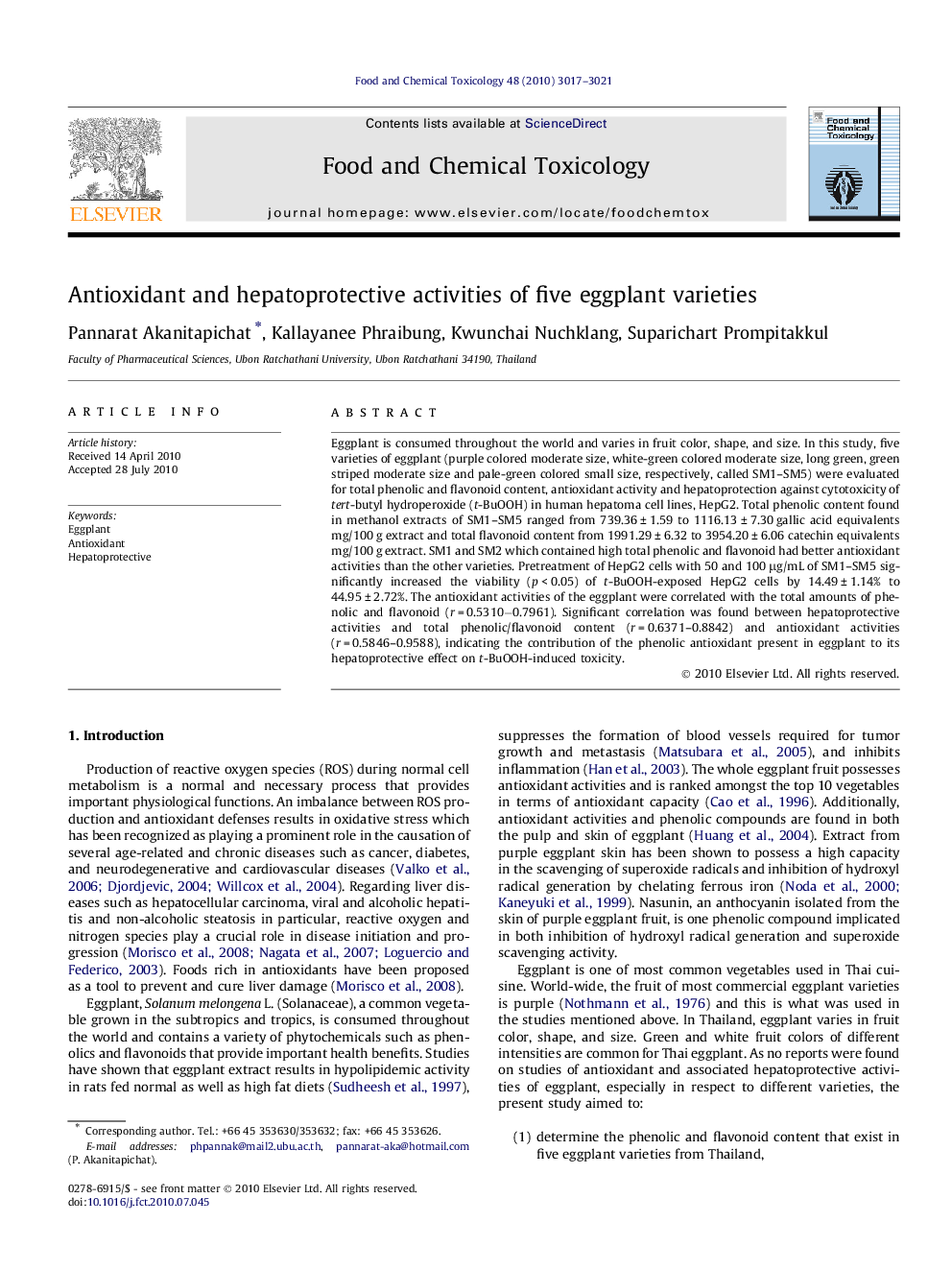| Article ID | Journal | Published Year | Pages | File Type |
|---|---|---|---|---|
| 2585623 | Food and Chemical Toxicology | 2010 | 5 Pages |
Eggplant is consumed throughout the world and varies in fruit color, shape, and size. In this study, five varieties of eggplant (purple colored moderate size, white-green colored moderate size, long green, green striped moderate size and pale-green colored small size, respectively, called SM1–SM5) were evaluated for total phenolic and flavonoid content, antioxidant activity and hepatoprotection against cytotoxicity of tert-butyl hydroperoxide (t-BuOOH) in human hepatoma cell lines, HepG2. Total phenolic content found in methanol extracts of SM1–SM5 ranged from 739.36 ± 1.59 to 1116.13 ± 7.30 gallic acid equivalents mg/100 g extract and total flavonoid content from 1991.29 ± 6.32 to 3954.20 ± 6.06 catechin equivalents mg/100 g extract. SM1 and SM2 which contained high total phenolic and flavonoid had better antioxidant activities than the other varieties. Pretreatment of HepG2 cells with 50 and 100 μg/mL of SM1–SM5 significantly increased the viability (p < 0.05) of t-BuOOH-exposed HepG2 cells by 14.49 ± 1.14% to 44.95 ± 2.72%. The antioxidant activities of the eggplant were correlated with the total amounts of phenolic and flavonoid (r = 0.5310−0.7961). Significant correlation was found between hepatoprotective activities and total phenolic/flavonoid content (r = 0.6371–0.8842) and antioxidant activities (r = 0.5846–0.9588), indicating the contribution of the phenolic antioxidant present in eggplant to its hepatoprotective effect on t-BuOOH-induced toxicity.
